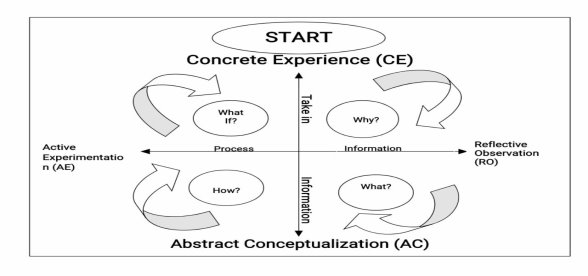In the given article the authors researched developing high education by implementing Total Quality Management principles.
Keywords: high education, Total Quality Management, teaching and learning.
Today, the world economy is experiencing an unprecedented change. New developments in science and technology, media revaluation and internationalization of education and the ever expanding competitive environment are revolutionizing the education scene. It is well recognized that higher education plays a vital role in driving economic growth and social cohesion. Higher education is reported to have grown dramatically with more than 17,000 higher education institutions in the world. [1]
On present evidence, there can be little doubt that education is being affected by the assault of globalization. With the continual increase of global and more powerful global multinational companies, more and more nations try to adopt their educational systems to cater for the needs of these global multinational economic giants. Nation states are in danger of becoming the servants of global markets with their educational systems providing the human resources to feed them. [2]
Education should train one’s powers of « reflective thinking» . Genuine freedom, according to Dewey, is intellectual; it rests in the trained power of thought, in the ability to « turn things over », to examine problems in depth. Reflecting thinking is based on five steps between recognition of a problem and its solution [3,4,5, and 6]:
- Suggestions of a solution
- Clarification of the essence of the problem
- The use of hypotheses
- Reasoning about the results of utilizing one of the hypotheses
- Testing the selected hypothesis by imaginative or overt action.
Mere imitation, dictation of steps to be taken and mechanical drill may give quick results, but they may have the adverse effect of strengthening traits likely to be fatal to reflective power. True learning of skills necessitates their acquisition as the results of the use of the intelligent powers of the mind.
There is a beautiful description by Michael Polanyi of the learning experience of medical students attending a course in the X-ray diagnosis of pulmonary diseases [7] and a number of factors emerge from it have been summarized [8]:
- The discovery that we need to know something that we do not know,
- Immersion in the problem,
- Puzzlement,
- Active engagement; obtaining information and testing of hunches,
- Repeated exposure to the learning situation,
- The presence of an expert who sets up the situation, acts as a model of competence and answers questions,
- Periodic insights,
- Pleasure in gaining insights,
- Doubt that one will ever really understand, and
- Faith that one will eventually understand.

Fig. 1. Learning Model
Effective teachers are by definition reflective practitioners. Continuous progress in their practice, the search for novel and better ways of engaging and challenging their students as well as themselves are second nature. They have been trained to analyze their performance as communicators and to objectively look for ways to make the difference, i.e. reflective practice is an established part of the teaching/learning culture or is it?
Nevertheless, if teaching is to be a meaningful activity, every teacher must be allowed the luxury of TIME and TOOLS to step back and assess their individual part within the educational context. This clearly will be a struggle and every struggle embodies a dilemma to which a balanced but optimized

- TQM emphasizes systems thinking. An organization’s effectiveness and efficiency in achieving its quality objectives are contributed by identifying, understanding and managing all interrelated processes as a system.
- TQM emphasizes Management by facts. Effective management is based on effective decisions which in turn are always based on the proper data analysis and information.
- TQM emphasizes team work the effectiveness TQM relies predominantly on a team-based approach.
- TQM emphasizes participatory management. People at all levels of an organization are the essence of this tenet. Their complete involvement enables their abilities to be used for the benefit of the organization.
- TQM emphasizes Human resource development. Every individual has potential; the need is to tap this potential. This process of HRD also improves self-introspection.
- TQM emphasizes action
- TQM emphasizes continuous Improvement
One of the permanent quality objectives of an organization should be the continual Improvement of its overall performance.
- TQM emphasizes long term planning.
- TQM emphasizes continuous and comprehensive evaluation.
- TQM emphasizes on effective leadership. [9]
Leaders of an organization establish unity of purpose and direction of it. They should go for creation and maintenance of such an internal environment, in which people can become fully involved in achieving the organization’s quality objective.
What can be expecting from a total quality approach to education? Increased customer satisfaction, improved programs, improved responsiveness to changes in the economic environment, costs reductions, improved student performance, increase teacher motivation, increased flexibility, improved cooperation between teachers and administration, greater parental and public involvement in our schools, and other too numerous to mention.
Challenges in higher education are no longer nation centric. They have already attained global dimensions, particularly after trade in services has been brought under the purview of the World trade Organization regime and hence the need for implementation of TQM. TQM, hopefully, will help institutes in creating new knowledge, acquiring new capabilities and producing an intelligent human resource pool, through challenging teaching, research and extension activities so as to balance both the need and the demand of higher education.
References:
- D. Kapranos «21 st century teaching & learning: kolb cycle & reflective thinking as part of teaching, creativity, innovation, enterprise and ethics to engineers». International symposium for Engineering Education, 2007, Dublin City University, Ireland.
- S. Das, P. Shil «Possibilities of TQM (Total Quality Management) in the Higher Education in India». Research Paper Management Volume: 2, Issue: 8, Aug 2013. ISSN No 2277–8160.
- Bottery M., Education, Policy and ethics, Continuum, London, 2000.
- McNiff J, Teaching and Learning: An Action Research Approach, Routledge, 1993.
- Whitehead, Creating a Living Educational Theory from Questions of the kind: How do I improve my Practice? Cambridge J. of Education,Vol. 19, No. 1, 1989.
- Winter, R., Learning from Experience — Principles and Practice in Action Research, The Falmer Press, UK, 1989.
- Wellington, J., Educational Research — Contemporary Issues and Practical Approaches, Continuum, 2000.
- Polanyi M., Personal Knowledge, Routledge & KeganPaul, 1958.
- Polanyi M., The Tacit Dimension, Rotledge & Keganpaul, London, 1967.







